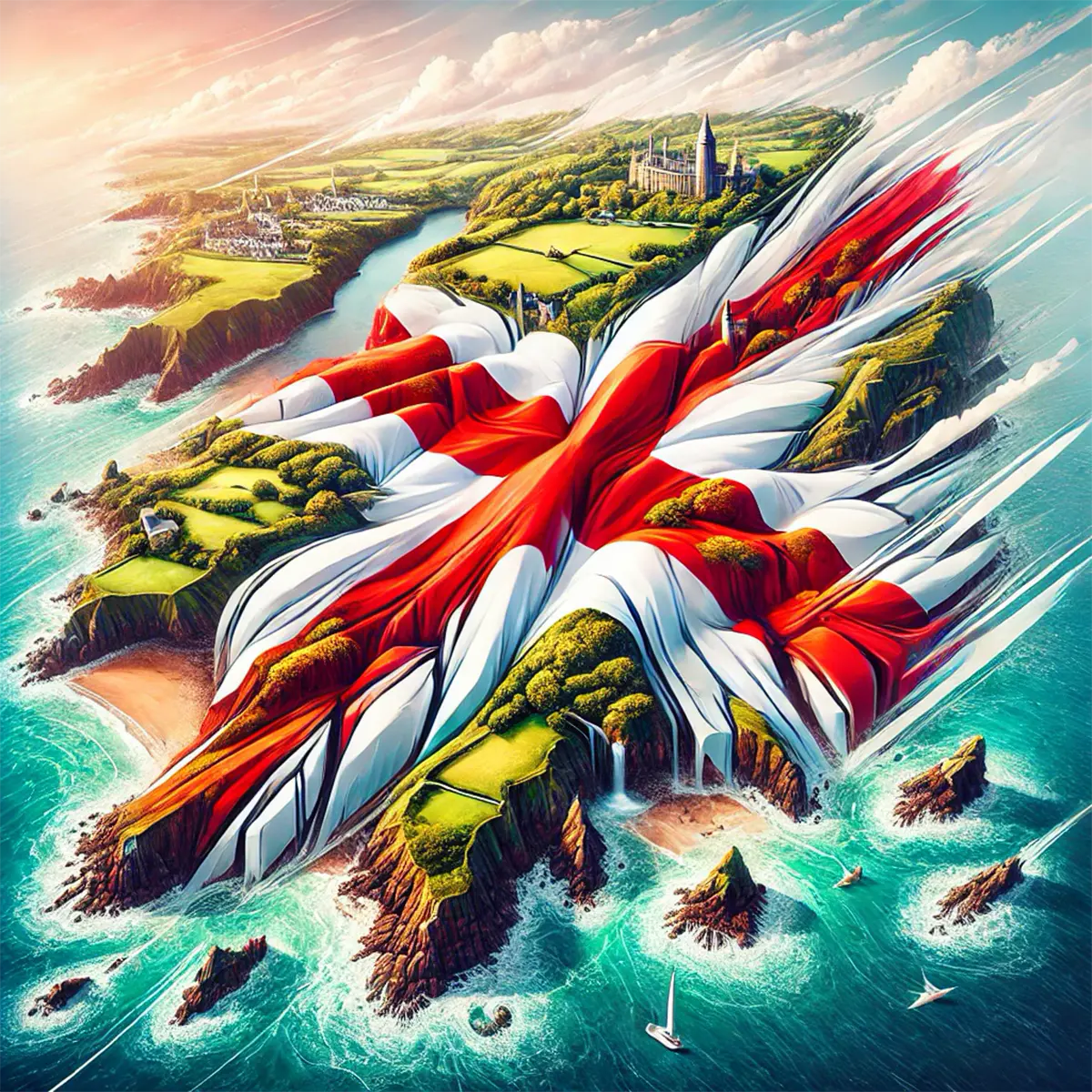The flag, which has been officially used since 1981, has the Jersey coat of arms crowned with the Plantagenet crown. Before that, the flag was a simple red diagonal cross of St. Patrick on a white background.

Historical research has not been able to establish the origin of this flag. Among the legends is the story that an erroneous translation from Dutch of the word "Erse" ("Irish") on a Dutch map mistakenly labeled "Ierse" (Jersey) with a red cross of St. Patrick. However, French Admiralty charts show that Jersey used a red diagonal cross even before the adoption of this symbol for the Order of St. Patrick and its inclusion in the modern Union flag.
Some argue that the red cross is of Norman origin. The red cross of the Order of St. Patrick was borrowed in the late 18th century from the heraldry of the Hiberno-Norman Fitzgerald family. If this is an old Norman symbol, then the Jersey red cross may have the same origin. Jersey, along with the other Channel Islands, was granted neutrality by the Pope during the war between England and France. Since they could trade freely with both sides, Jersey ships needed a way to distinguish themselves from English ships. So they rotated the cross of St. George.
In the second half of the 20th century, as Jersey gained more weight on the international stage, many felt that the flag was not distinctive enough to represent the island, that there was too much confusion with the St. Patrick's Cross as an Irish symbol, and that it was adopted as one of the international maritime signal flags. However, many wanted to keep the traditional cross, which has been used since time immemorial. A variant of the flag with three leopards, the island's heraldic symbol, was also proposed.
Thus, the current flag can be seen as a compromise between different trends. Although the flag is flown in Jersey, the three leopards are much more widely used as a national symbol of the government and civilian population.




